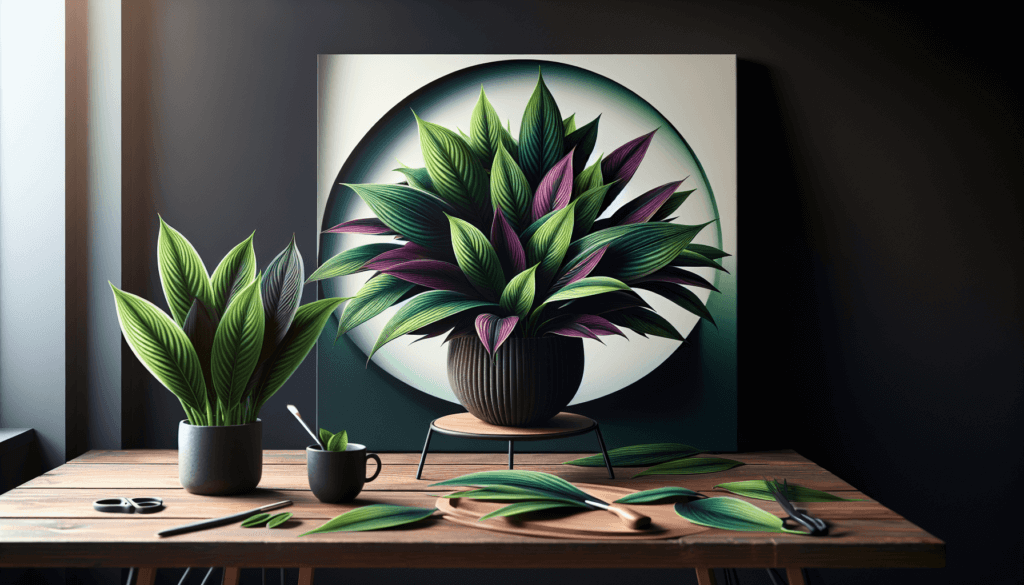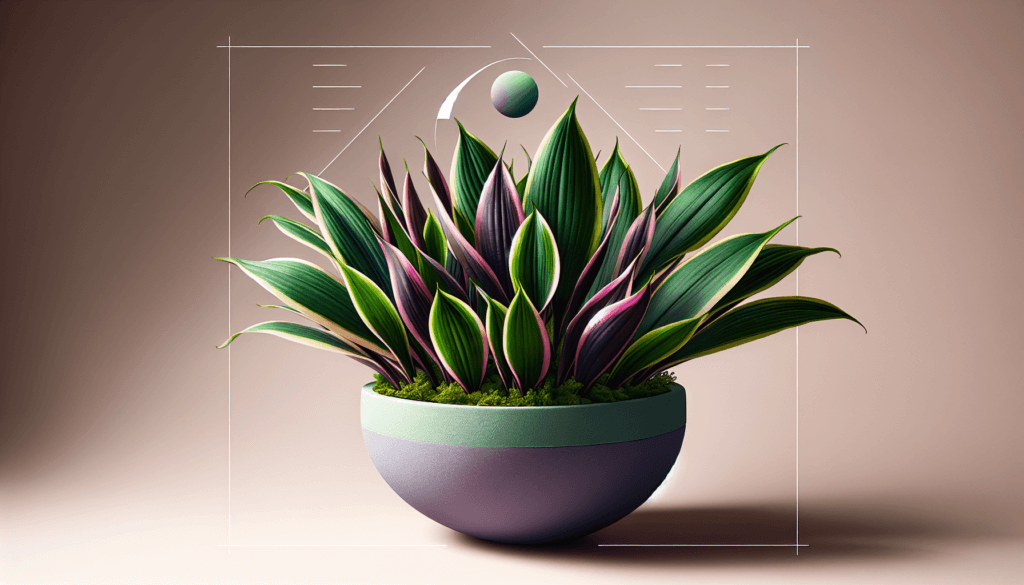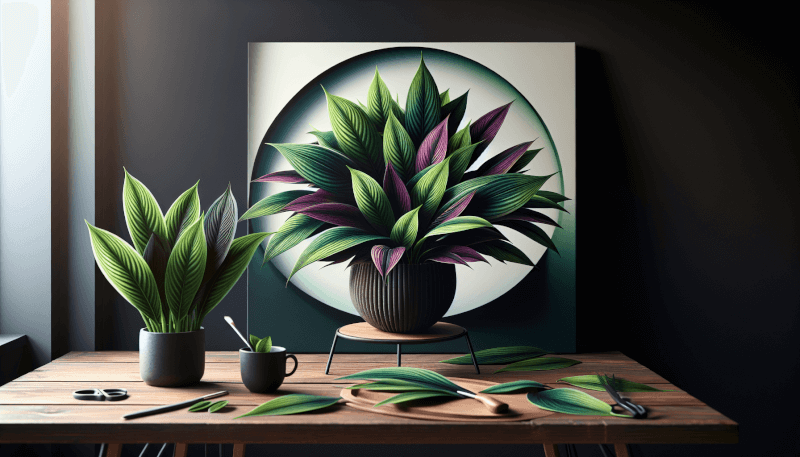Ready to learn all about how to take care of your Moses in the Cradle plant? Look no further! In this article, we will guide you through the ins and outs of maintaining this unique and vibrant plant. From watering and lighting requirements to tips on propagation and common issues, we’ve got you covered. Whether you’re a seasoned plant parent or just starting your indoor garden, this is the ultimate guide to ensuring your Moses in the Cradle thrives and becomes the envy of all your friends. Let’s dive in and discover the secrets to successful Moses in the Cradle plant care!
Choosing the Right Location
Light Requirements
When it comes to choosing the right location for your Moses in the Cradle plant, it’s important to consider its light requirements. These plants thrive in bright, indirect light, so it’s best to place them near a window that receives filtered sunlight. Avoid direct sunlight, as it can scorch the leaves and cause them to turn yellow.
Temperature and Humidity
Moses in the Cradle plants prefer temperatures between 60-75°F (15-24°C), which makes them ideal for indoor environments. However, they can also tolerate slightly cooler or warmer temperatures. It’s important to keep them away from drafts or extreme temperature fluctuations, as this can affect their growth.
In terms of humidity, these plants thrive in average household humidity levels. If your home is particularly dry, you can increase humidity by placing a tray of water near the plant or using a humidifier.
Indoor or Outdoor Placement
Moses in the Cradle plants can be grown both indoors and outdoors, depending on your climate and personal preference. When grown outdoors, they make beautiful ground cover or border plants. However, they are also well-suited for indoor cultivation, where they can add a touch of greenery to your living space.
If you choose to grow them outdoors, make sure to plant them in well-draining soil. Indoors, they can be grown in pots or hanging baskets, making them a versatile option for any space.
Watering and Moisture
Watering Frequency
Proper watering is essential for the health of your Moses in the Cradle plant. These plants prefer to be kept evenly moist, but not overly saturated. It’s best to water them when the top inch of soil feels dry to the touch.
During the summer months, when the plant is actively growing, watering once or twice a week should be sufficient. In the winter, when the plant is in a dormant phase, you can reduce watering frequency to once every 10-14 days.
Checking the Soil Moisture
To ensure you’re watering your Moses in the Cradle plant correctly, it’s important to check the soil moisture regularly. One way to do this is by sticking your finger about an inch into the soil. If it feels dry at that depth, it’s time to water.
Another method is to use a moisture meter, which can provide a more accurate reading of the soil moisture levels. This can be particularly helpful if you’re unsure about your plant’s water needs or if you tend to overwater.
Humidity Needs
While average household humidity is generally sufficient for Moses in the Cradle plants, they can benefit from a slight increase in humidity, especially during dry winter months or in air-conditioned spaces.
To increase humidity around your plant, you can mist the leaves with water using a spray bottle or place a humidifier nearby. Another option is to group your plants together, as they collectively release moisture through transpiration, creating a microclimate of increased humidity around them.

Fertilizing
Choosing the Right Fertilizer
Applying fertilizer can help promote healthy growth and vibrant foliage in your Moses in the Cradle plant. When choosing a fertilizer, opt for a balanced, water-soluble formula specifically designed for houseplants. Look for a fertilizer with an NPK ratio of around 10-10-10 or a similar balanced formulation.
Frequency of Fertilization
During the active growing season, which typically spans from spring to early fall, you can fertilize your Moses in the Cradle plant every 2-4 weeks. However, it’s important not to over-fertilize, as this can lead to salt build-up in the soil and burn the plant’s roots.
In the dormant season, you can reduce fertilization to once every 6-8 weeks. This allows your plant to rest and prepare for the next growing season.
Application Method
When applying fertilizer to your Moses in the Cradle plant, follow the package instructions for dilution ratios. It’s important not to apply undiluted fertilizer to the plant, as this can cause fertilizer burn.
Water the plant thoroughly before applying fertilizer to ensure the nutrients are evenly distributed in the soil. Pour the diluted fertilizer solution directly onto the soil, avoiding contact with the leaves. This helps prevent any potential damage caused by the fertilizer coming into direct contact with the foliage.
Pruning and Propagation
Removing Dead or Yellow Leaves
Regular pruning is an essential part of Moses in the Cradle plant care, as it helps maintain the plant’s overall health and appearance. One important aspect of pruning is removing dead or yellow leaves, which not only improves the plant’s aesthetics but also prevents any potential disease or pest issues.
To remove dead or yellow leaves, simply use clean scissors or pruning shears to make a clean cut at the base of the leaf stem. Be sure to sanitize your pruning tools before and after use to prevent the spread of any potential diseases.
Promoting Bushiness
If you want to encourage a bushier growth habit in your Moses in the Cradle plant, pruning can help achieve that. To promote bushiness, selectively prune the stems, cutting just above a leaf node. This encourages new growth from the node, resulting in a denser and more compact plant.
Regular pruning to maintain the desired shape and size is also important. This can be done by trimming back any leggy or overgrown stems to maintain a balanced and aesthetically pleasing appearance.
Propagating Moses in the Cradle
Propagating Moses in the Cradle plants is a fun and rewarding way to expand your plant collection or share with friends and family. These plants can be easily propagated through stem cuttings.
To propagate, select a healthy stem with at least a few nodes and leaves. Using clean scissors or pruning shears, make a sharp cut just below a leaf node. Remove any lower leaves, leaving only a few leaves at the tip.
Place the cutting in a glass of water or a well-draining potting mix, ensuring that at least one node is submerged or in contact with the soil. Keep the cutting in a warm, bright location and mist the leaves occasionally to maintain humidity.
After a few weeks, the cutting should develop roots and can be potted in its own container with potting soil. Remember to water regularly and provide a suitable growing environment to ensure the successful growth of your propagated Moses in the Cradle plant.

Pest and Disease Control
Common Pests
Moses in the Cradle plants are generally resistant to pests. However, like any plant, they can occasionally encounter some unwanted visitors. The most common pests that may affect these plants include spider mites, mealybugs, and aphids.
Spider mites are tiny pests that cause webbing and leaf damage. Mealybugs are small, white insects that leave a white, waxy residue on the leaves. Aphids are small, soft-bodied insects that can cluster on the stems and leaves, causing distortion and yellowing.
Prevention and Treatment
Preventing pest infestations is key to maintaining a healthy Moses in the Cradle plant. Regularly inspect your plant for any signs of pest activity, such as webs, sticky residue, or distorted leaves. Isolate any affected plants to prevent the pests from spreading to other plants.
To treat minor infestations, you can use organic insecticidal soap or neem oil. These products are effective against a wide range of pests and are safe to use on indoor plants. Follow the package instructions for proper use and application.
For more severe infestations, it may be necessary to use stronger chemical insecticides. However, it’s important to read and follow the instructions carefully and use these products with caution, as they can be harmful to humans and pets.
Identifying Diseases
While Moses in the Cradle plants are generally disease-resistant, they can occasionally be affected by fungal diseases such as root rot or leaf spot. Root rot is caused by overwatering or poorly drained soil, leading to the rotting of the plant’s roots. Leaf spot appears as small, water-soaked spots on the leaves, which can eventually turn brown and cause leaf drop.
To prevent these diseases, it’s important to provide proper watering and ensure the soil has good drainage. Avoid overwatering and remove any infected leaves to prevent the spread of disease.
If you suspect your Moses in the Cradle plant has a disease, it’s best to consult a plant care professional or local garden center for proper diagnosis and treatment options.
Repotting
When to Repot
Moses in the Cradle plants generally need to be repotted every 1-2 years, depending on their growth rate and size. Signs that your plant may need repotting include roots growing out of the drainage holes, the plant becoming too large for its current pot, or the soil drying out too quickly after watering.
Repotting is best done in the spring when the plant is entering its active growing phase. This allows the plant to recover quickly from any potential root disturbance.
Choosing the Right Pot
When selecting a new pot for your Moses in the Cradle plant, choose one that is slightly larger than its current pot. The new pot should have drainage holes to ensure proper water drainage and prevent root rot.
Terracotta pots are a popular choice, as they are porous and allow for better airflow to the roots. However, any well-draining pot will suffice as long as it is the appropriate size and provides good drainage.
Repotting Steps
To repot your Moses in the Cradle plant, follow these steps:
Water the plant thoroughly a day or two before repotting. This helps loosen the roots and makes it easier to remove the plant from its current pot.
Select a slightly larger pot with drainage holes.
Fill the new pot with a well-draining potting mix, leaving enough space at the top for the Moses in the Cradle plant’s root ball.
Gently tap the sides of the current pot to loosen the plant’s roots. Carefully slide the plant out of its pot, taking care not to damage the roots.
Place the plant in the center of the new pot, ensuring it is at the same depth as it was in the previous pot. Adjust the soil as needed to achieve the proper height.
Fill in the gaps with additional potting soil, gently pressing it down to secure the plant in place.
Water the plant thoroughly after repotting, allowing any excess water to drain out of the pot.
Place the newly repotted Moses in the Cradle plant in a bright location, but avoid direct sunlight for a few days to allow it to recover from the repotting process.
Troubleshooting Common Issues
Yellowing Leaves
Yellowing leaves can be a sign of various issues with your Moses in the Cradle plant. One common cause is overwatering, which can lead to root rot and suffocate the roots. To remedy this, adjust your watering habits and ensure proper drainage.
Another possible cause of yellowing leaves is underwatering. If the soil is consistently dry and the leaves are wilting, increase your watering frequency.
Additionally, yellowing leaves may indicate nutrient deficiencies. Consider adjusting your fertilization routine or using a balanced houseplant fertilizer to provide the necessary nutrients.
Wilting
Wilting in Moses in the Cradle plants can be a sign of underwatering or overexposure to sunlight. If the soil is dry and the leaves are drooping, increase your watering frequency. Ensure the plant is not exposed to direct sunlight, as this can cause moisture loss and lead to wilting.
Another potential cause of wilting is pest infestation, particularly if you notice small insects on the plant. Treat any pest issues promptly to prevent further stress on the plant.
Brown Spots on Leaves
Brown spots on the leaves of your Moses in the Cradle plant can indicate several issues. Overwatering or poor drainage can lead to root rot, which manifests as brown and mushy roots.
To remedy this, adjust your watering habits and ensure the plant is not sitting in excess water. If root rot is severe, it may be necessary to repot the plant, trimming away any affected roots and using fresh, well-draining soil.
Brown spots can also be a result of fungal diseases such as leaf spot. In these cases, remove any affected leaves and treat the plant with a suitable fungicide.
Decorative Uses and Varieties
Moses in the Cradle as Hanging Plants
Moses in the Cradle plants can make stunning hanging plants, adding a touch of greenery and unique foliage to your indoor or outdoor space. Their cascading leaves and vibrant colors create a visually appealing display.
To grow Moses in the Cradle as a hanging plant, choose a hanging basket with good drainage. Fill the basket with a well-draining potting mix and plant the Moses in the Cradle at the center of the basket. As the plant grows, its trailing stems will gracefully cascade over the edges of the basket, creating a beautiful hanging display.
Colorful Varieties
While the traditional Moses in the Cradle features striking green leaves and purple undersides, there are also other colorful varieties available. The ‘Variegatus’ variety features green leaves with white or cream-colored stripes, adding a unique touch to your plant collection. Another variety, ‘Tricolor,’ displays leaves with green, pink, and cream coloration, making it a visually stunning choice.
These colorful varieties can be used to create eye-catching arrangements or to add a pop of color to your indoor or outdoor space.
Complementary Pairings
Moses in the Cradle plants can be paired with a variety of other houseplants to create visually appealing combinations. Their vibrant foliage and cascading stems make them excellent companions for plants with contrasting textures and colors.
Consider pairing the Moses in the Cradle with plants like the Spider Plant, with its arching variegated leaves, or the Prayer Plant, with its intricate patterned foliage. These combinations can create beautiful displays and add interest to your plant collection.
Benefits of Moses in the Cradle
Air Purification
Like many other houseplants, Moses in the Cradle plants have the ability to purify the air. They can remove toxins such as formaldehyde and xylene, improving the air quality in your home or office space. Having these plants around can contribute to a healthier and more enjoyable indoor environment.
Stress Reduction
Being surrounded by nature has been shown to reduce stress levels and improve overall well-being. Moses in the Cradle plants, with their lush foliage and vibrant colors, can help create a calming and soothing atmosphere. Their presence can contribute to a sense of tranquility and promote a more peaceful environment.
Improving Indoor Environment
In addition to air purification and stress reduction, Moses in the Cradle plants can also improve the indoor environment in other ways. They release moisture through the process of transpiration, which increases humidity and helps combat dry indoor air. This can be especially beneficial during the winter months or in air-conditioned spaces, where low humidity levels are a common issue.
Furthermore, plants are known to absorb and reduce noise levels, providing a quieter and more peaceful environment. Having Moses in the Cradle plants in your living space can contribute to a more harmonious atmosphere.
Conclusion
Caring for your Moses in the Cradle plant is a rewarding and enjoyable experience. By considering factors such as light requirements, watering and moisture needs, fertilizing, pruning and propagation techniques, pest and disease control, repotting, troubleshooting common issues, and the decorative uses and varieties available, you can ensure your plant thrives and adds beauty to your space.
The benefits of Moses in the Cradle plants, including air purification, stress reduction, and overall improvement of the indoor environment, make them an excellent choice for any plant lover. So go ahead and bring a touch of nature into your home with this remarkable and versatile plant. Happy gardening!

